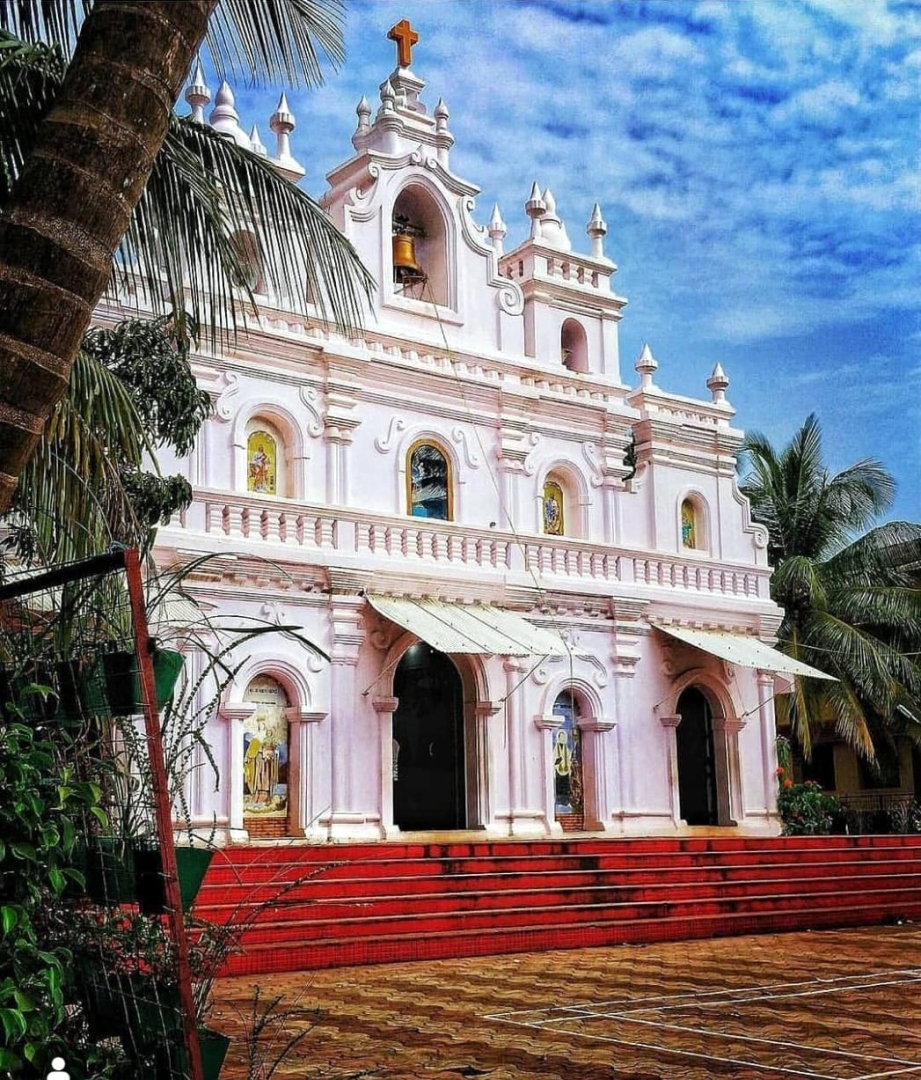
CHRONICLES OF GOAN CHURCHES
The Church at the tourist village of Arambol, Pernem, resting on a tiny hillock, is dedicated to Our Lady of Mount Carmel and parishioners celebrate the feast on the third Sunday of January, which this year falls on January 19. On the following day, the parishioners celebrate the ‘Boil-karanchem Fest.’
THE HISTORY
The Church at Arambol is the ‘mother church’ in the Pernem taluka, as it was the first parish church in the area. Its history can be traced to the 18th century. Fr Patricio Fernandes, the missionary Vicar of Sawantwadi and the Province of Pernem, constructed the first church in 1780 with his own finances and it was dedicated to St John the Baptist.
Since Pernem then was under the ecclesial jurisdiction of Sawantwadi, the church was aggregated to it until 1827, having its own Vigario Privativo (Private Vicarage). In the same year, it was separated from it and Fr Manuel Homem, via the letter dated October 22, 1827, was appointed the first parish priest of the church. It remained the Mission church till 1833, receiving an annual stipend from the Government for its maintenance.
DEVELOPMENTS
In 1841, the parishioners reconstructed it and dedicated it to Our Lady of Mount Carmel. In 1878, one part of the façade was demolished and an artistic decorative one was constructed and its expenses were borne by the Government of Public Revenue (Fazenda Publica).
In 1890, the Stations of the Cross were constructed in its premises. In 1907, the church was further extended and it was blessed on January 18, 1908. In May 1957, the parish was handed over to the Society of Pilar, but within 3 years, they returned it to the Archdiocese of Goa.
Fr Justino Luciano Fernandes (parish priest from 1989-1997), constructed a new wing on the right side of the Church and also made a provision for the construction of a mini hall above it.
Seeing the needs of the faithful, the church was further extended in 2001 with the construction of side wings and Blessed Sacrament Oratory by then parish priest Fr Ligorinho D’Costa and it was blessed on December 8 of the same year.
Since the parochial house was in a pathetic condition, it was demolished in 2000 and the foundation for a new one was laid the same year. It was completed within a year and inaugurated by then parochial administrator of the Archdiocese of Goa and Daman, Fr. Victor Rodrigues on December 8, 2001.
THE CHURCH
The present Church structure is the fusion of old and new structural elements; its façade is built in Neo-Roman style and Indian influence. At the apex of the façade is the bell and below it encased is the statue of the patron – Our Lady of Mount Carmel.
On either side of the main door of the church, which is impost with fine cornices, are paintings on bricks; one is that of St Joseph Vaz, which was designed by Olympio Fernandes of Siolim and donated by Cosme. This was done during the tenure of Fr Andrew Dionisio as parish priest (2002-2007) and the other is that of Our Lady of Mount Carmel. It has three storeys; the third storey has a belfry and four turrets with cone finials. The middle turret has a cross in between. The belfry at its apex has diminished Rococo-style curves.
The Church is supported by four Doric columns, which have Tuscan type of capital and at the upper level of the wall there is a clerestory that permits direct illumination of the nave. Above the narthex is a choir loft. In the church compound is a huge Cross mounted on a pedestal, a grotto of Our Lady of Lourdes and the statue of Our Lady of Vailankani.
THE ALTARS
The Church has three altars. The middle altar is dedicated to Our Lady of Mount Carmel who is depicting holding infant Jesus, flanked by statues of Good Shepherd and St Joseph. The other altars are dedicated to St Joseph Vaz, (which was earlier dedicated to the Sacred Heart) and to Calvary.
(The writer is Superior at Casa Professa, Basilica of Bom Jesus in Old Goa.)